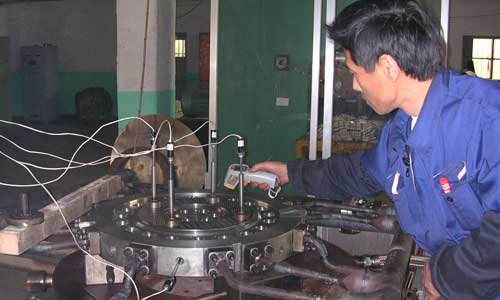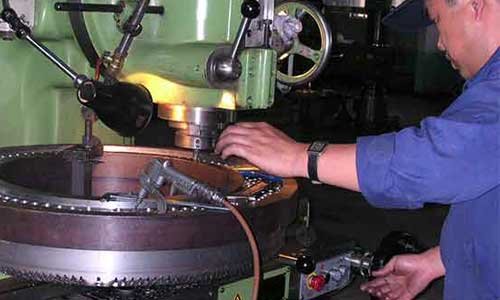Cutting superiority of ceramic and cermet tools
Brian Wilshire pointed out: “Everyone thinks of ceramics as being like ceramic coffee cups. If they fall, they will break. How can it be used to cut metal?
As the technical center manager of Kyocera Precision Tools, Wilshire has a good understanding of ceramic composite materials and the metal cutting performance of cermet tools. Kyocera in Hendersonville, North Carolina, can provide ceramic and cermet tools for milling and turning. Ceramic tool materials include aluminum oxide (Al2O3), silicon nitride (SiN), and silicon aluminum oxynitride (SiAlON) ceramics.

Wilshire pointed out that because of the relatively high toughness of SiN and SiAlON ceramics, especially their high-temperature toughness, tools made of this material are most suitable for cutting cast iron and heat-resistant superalloys.
“But the brittleness of Al2O3-based ceramics is still quite large, so it is mainly used for continuous processing of hard turning or cast iron precision turning.”
According to Steve Howard, marketing and engineering manager of NTK Cutting Tools USA in Wixom, Michigan, SiN-based ceramic materials such as NTK SX6 and SP9 have twice the fracture toughness of alumina-based ceramics, and can be used at speeds up to 3000 sfm. Turning and milling cast iron.
Wilshire pointed out that, as the name suggests, metal ceramics contain ceramic components (such as TiC, TiCN, and molybdenum carbide) and metal bonding agents (such as nickel, small amounts of molybdenum, and cobalt).
He pointed out that cermets are more brittle than hard alloys, so cermet tools are more prone to chipping and breaking during heavy cutting. Therefore, more users think that cermet tools are suitable for finishing with a cutting depth of 0.010″-0.020″.
He said, “If it is intermittent cutting or the workpiece material has a hard surface, cemented carbide tools are still the first choice.”
Application range of ceramic and cermet tools
| Tool material | Workpiece material | Cutting conditions | Application | Coolant |
| Alumina | GJL | Continuous cutting | Turning, grooving | Dry |
| Hybrid ceramics | GJL, GJS, chilled cast iron, hardened steel | Continuous cutting | Turning, milling, grooving | Dry, coolant |
| Hybrid ceramic, coating | GJL, GJS, chilled cast iron, hardened steel | Continuous cutting | Turning, milling, boring, grooving | Dry, coolant |
| Silicon nitride | GJL, GJS | Continuous cutting | Turning, milling, boring, grooving | Dry, coolant |
| Silicon nitride, coating | ADI, CGI, GJL, GJS | Continuous cutting | Turning, milling, boring, grooving | Dry, coolant |
| Alpha / Beta SiAlON | GJL, HRSA, Si-GJS | Continuous cutting | Turning, milling, boring, grooving | Dry, coolant, determined by the application |
| Alpha / Beta SiAlON, coating | GJL, HRSA, Si-GJS | Continuous cutting | Turning, milling, boring, grooving | Dry, coolant, determined by the application |
| Cermet, TiCN, and other coatings | GJL, GJS, sintered metal, carburized steel, heat-treated steel, structural steel, free-cutting steel, stainless steel, acid-resistant steel, cast steel | Continuous cutting, stable interrupted cutting | Turning, milling, boring, grooving | Dry, coolant, determined by the application |



